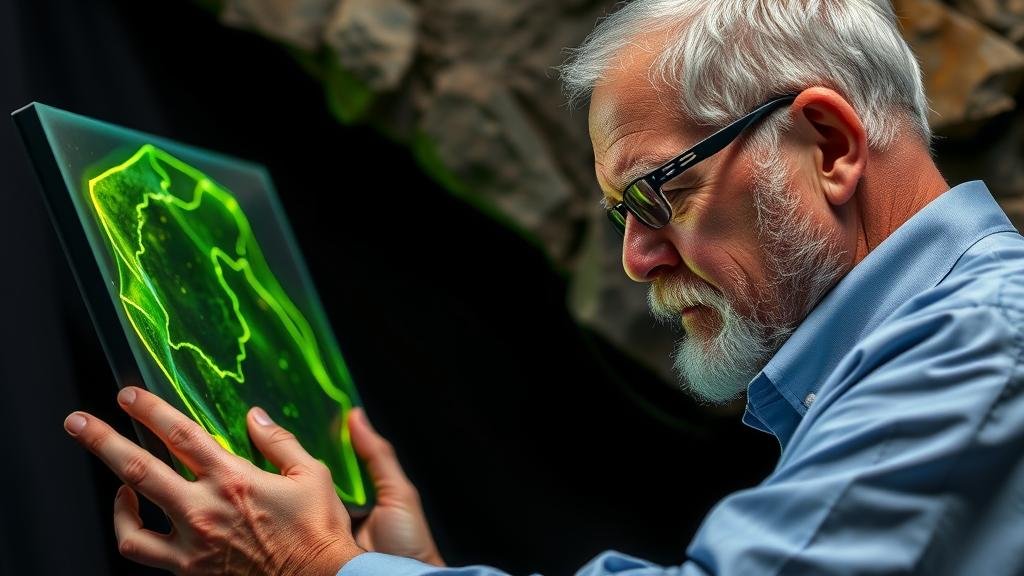How to Recognize Faint, Low-Conductivity Signals for Rare Relics
How to Recognize Faint, Low-Conductivity Signals for Rare Relics
The pursuit of rare relics, whether they are coins, jewelry, or archaeological artifacts, is a skill that combines knowledge of technology, geology, and historical context. Detecting faint, low-conductivity signals necessitates a fine understanding of both the tools at your disposal and the environmental factors that influence signal detection. This article aims to provide a comprehensive guide on how to adeptly recognize these elusive signals, which are often symptomatic of buried treasures.
Understanding Low-Conductivity Signals
Low-conductivity signals typically arise from materials that are not excellent conductors of electricity. This includes non-metallic materials as well as certain types of metal with low electrical conductivity, such as gold, brass, or certain ancient coins. Understanding the nature of these signals helps operators differentiate between treasure and common ground noise.
Technological Considerations
When detecting faint signals, the choice of a metal detector plays a crucial role. Metal detectors operate using electromagnetic fields. When these fields encounter metallic objects, they produce signals. But, faint and low-conductivity signals require specific settings and equipment capabilities.
- Ground Balance Adjustments: Effective ground balance settings can help filter out unwanted background noise. Fine-tuning your machine to understand the soil mineralization can improve the sensitivity to low-conductivity targets.
- Detection Modes: Many advanced metal detectors have multiple modes. Switching to All Metal or specialized modes designed for low-conductivity settings can enhance detection capabilities.
Environmental Factors Affecting Detection
The environment significantly influences the ability to receive faint signals. Soil composition, moisture content, and temperature can all alter the performance of a metal detector.
- Soil Composition: Heavy mineralization can mask low-conductivity signals. Conductivity is affected by the grounds mineral content, so operators should be wary of highly mineralized soils when hunting for relics.
- Moisture Content: Generally, wetter conditions enhance conductivity. Counsel professionals to scout during periods of lower ground moisture to improve signal clarity.
Signal Interpretation Techniques
Developing an ear for the nuances of signal interpretation can be an asset in treasure hunting. Faint signals require careful scrutiny in relation to contextual clues and detection history.
- Listen for Tone Variations: Many metal detectors have auditory indicators for different detected materials. Low-conductivity items often produce a softer, more subtle tone. Practicing these auditory distinctions can hone your detection skills.
- Monitor Depth Readings: If your detector indicates a low, deep signal, it may well be a faint low-conductivity object. Understanding the meter’s readings requires practice, but it can provide significant insights about what might be buried.
Practical Applications and Case Studies
To contextualize these techniques, consider the case of a hobbyist detectorist who utilized these principles in an area reputed for historical battlefields. This individual, familiar with low-conductivity signals, was particularly attentive to softer auditory cues from their detector.
By adjusting the ground balance to counteract the high mineralization in that region, they were able to filter background noise effectively. Through this method, they detected a series of low-conductivity signals that ultimately led them to a rare artifact: an ancient pin made from low-quality gold, a material that had eluded other treasure hunters due to its faint signature.
Actionable Takeaways
- Always adjust your metal detector settings based on ground conditions to enhance your ability to recognize low-conductivity signals.
- Practice signal interpretation in varied environments to develop a more acute awareness of the subtle differences in tones.
- Document your findings and experiences thoroughly. Recognizing patterns from previous digs can aid considerably in future hunts.
To wrap up, recognizing faint, low-conductivity signals for rare relics is a multifaceted endeavor requiring both technical skill and experiential learning. By understanding the nuances of technology, environmental factors, and signal interpretation, detectorists can enhance their likelihood of success in uncovering valuable historical treasures.



